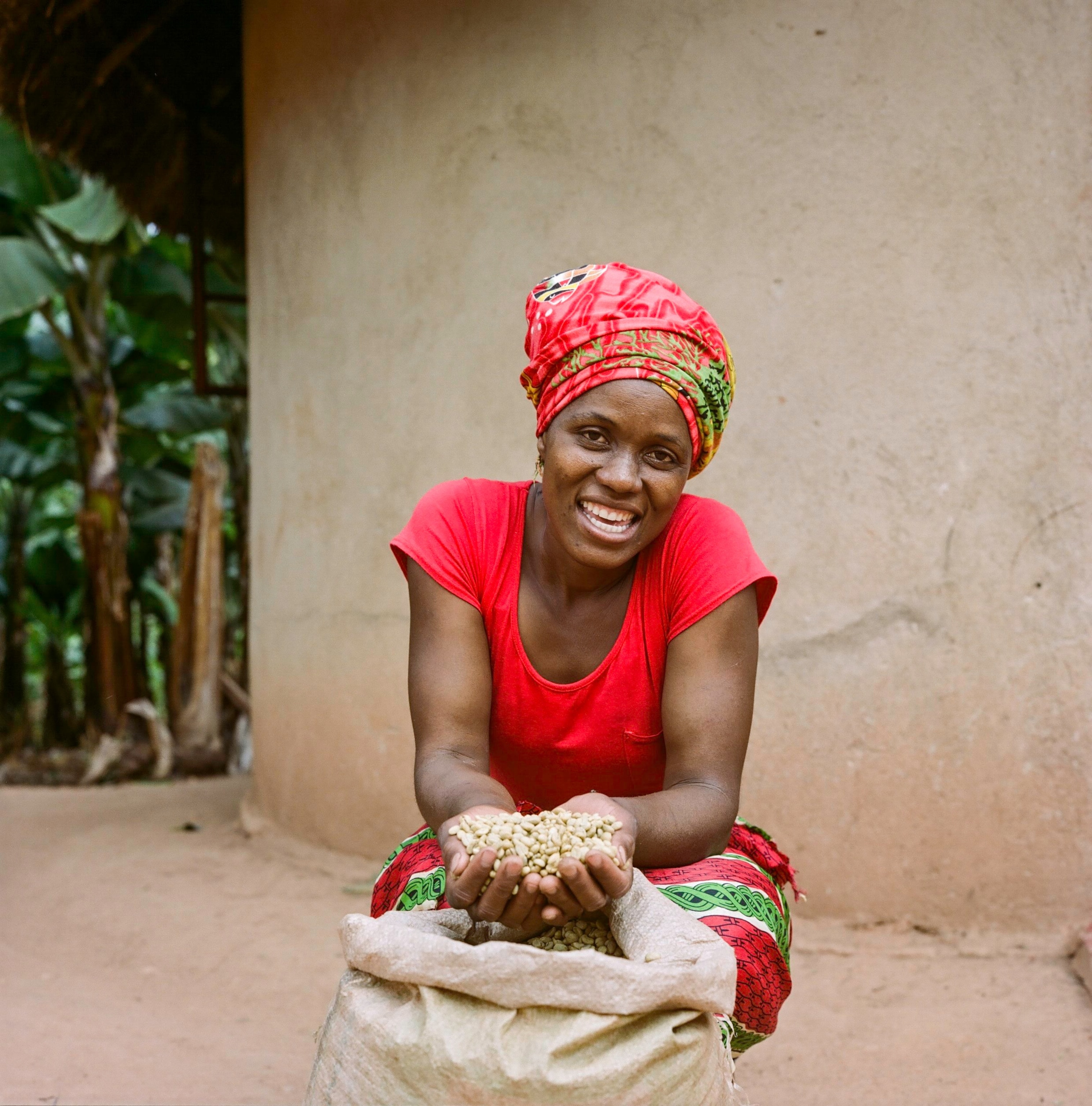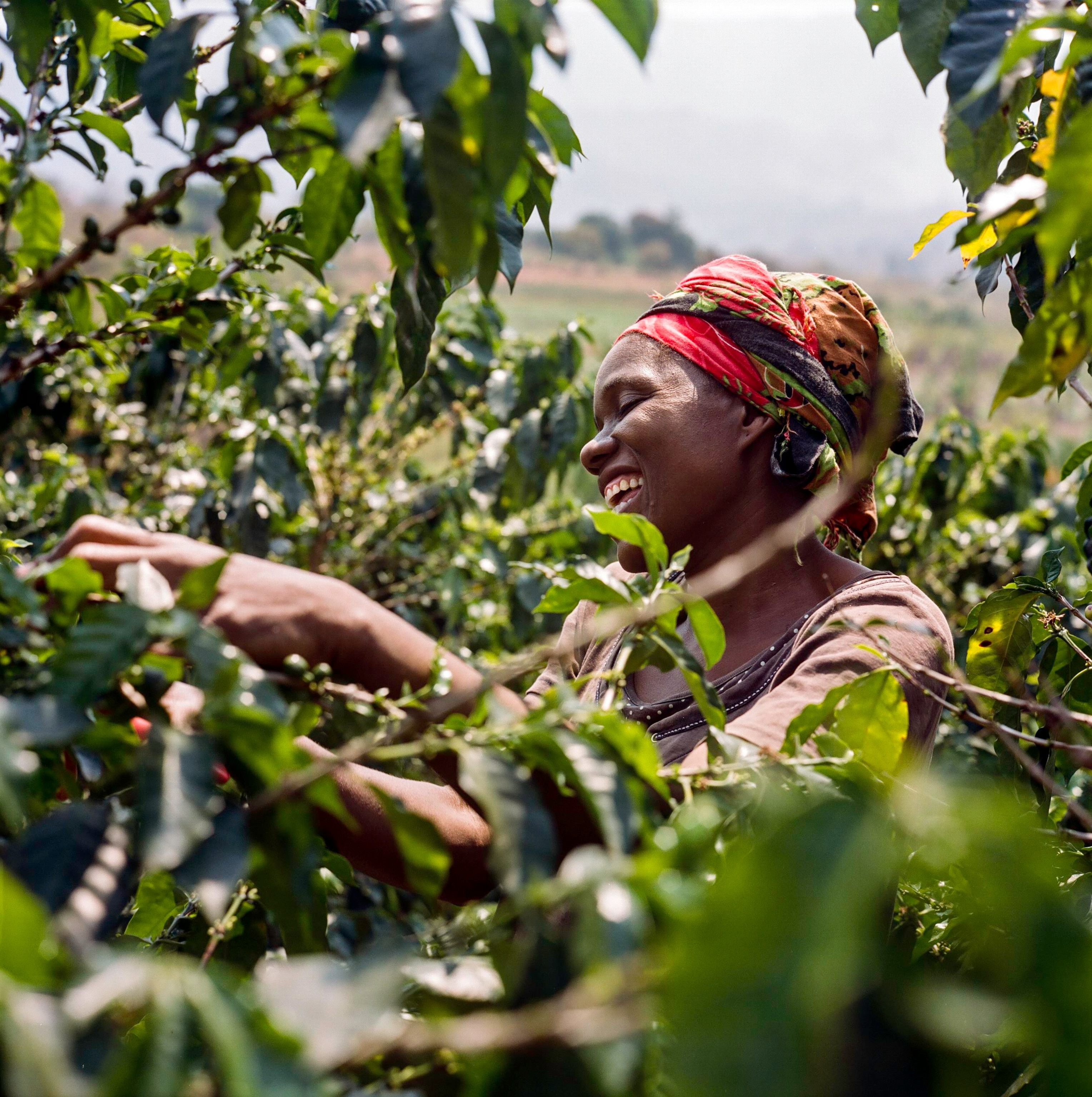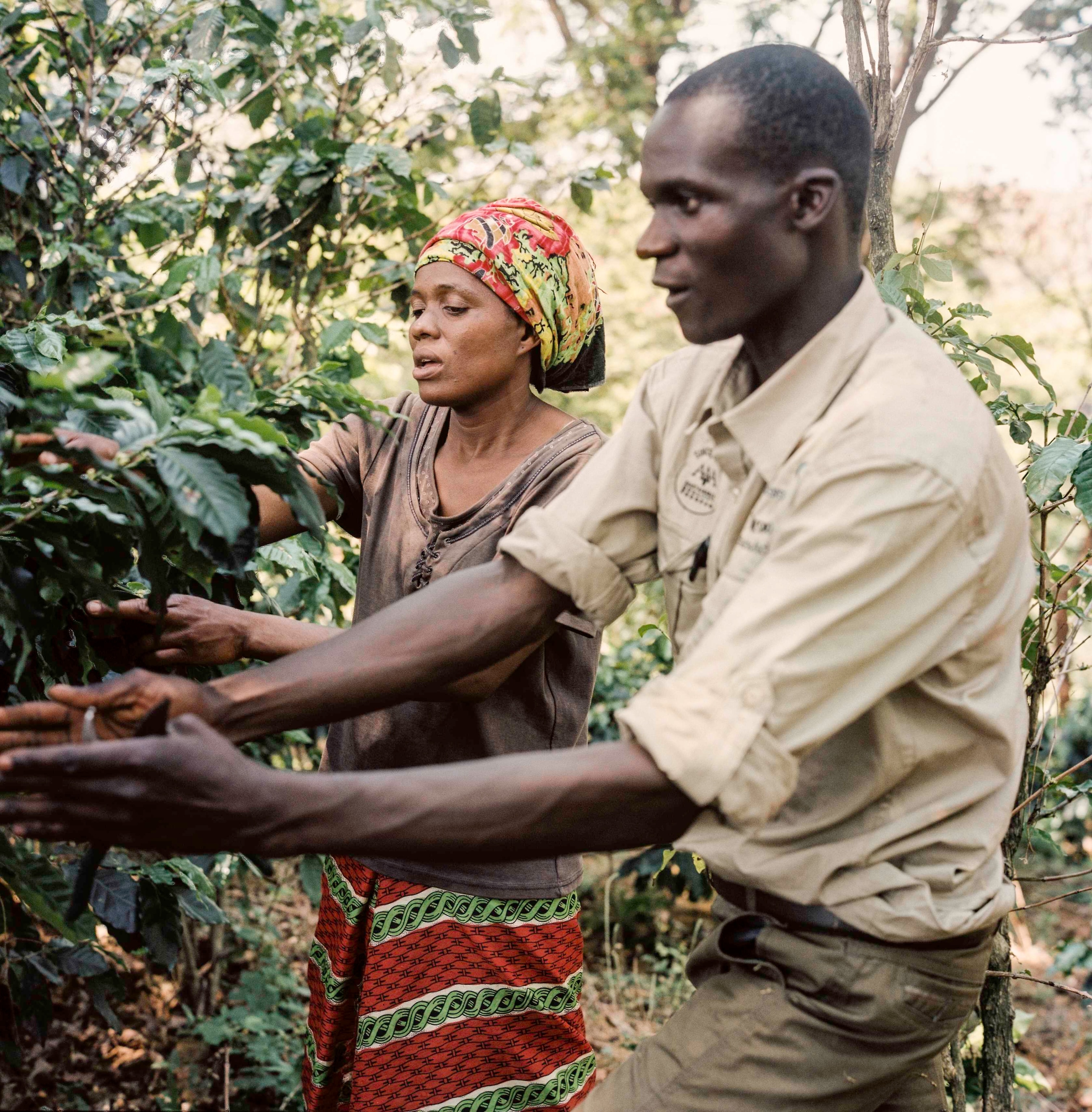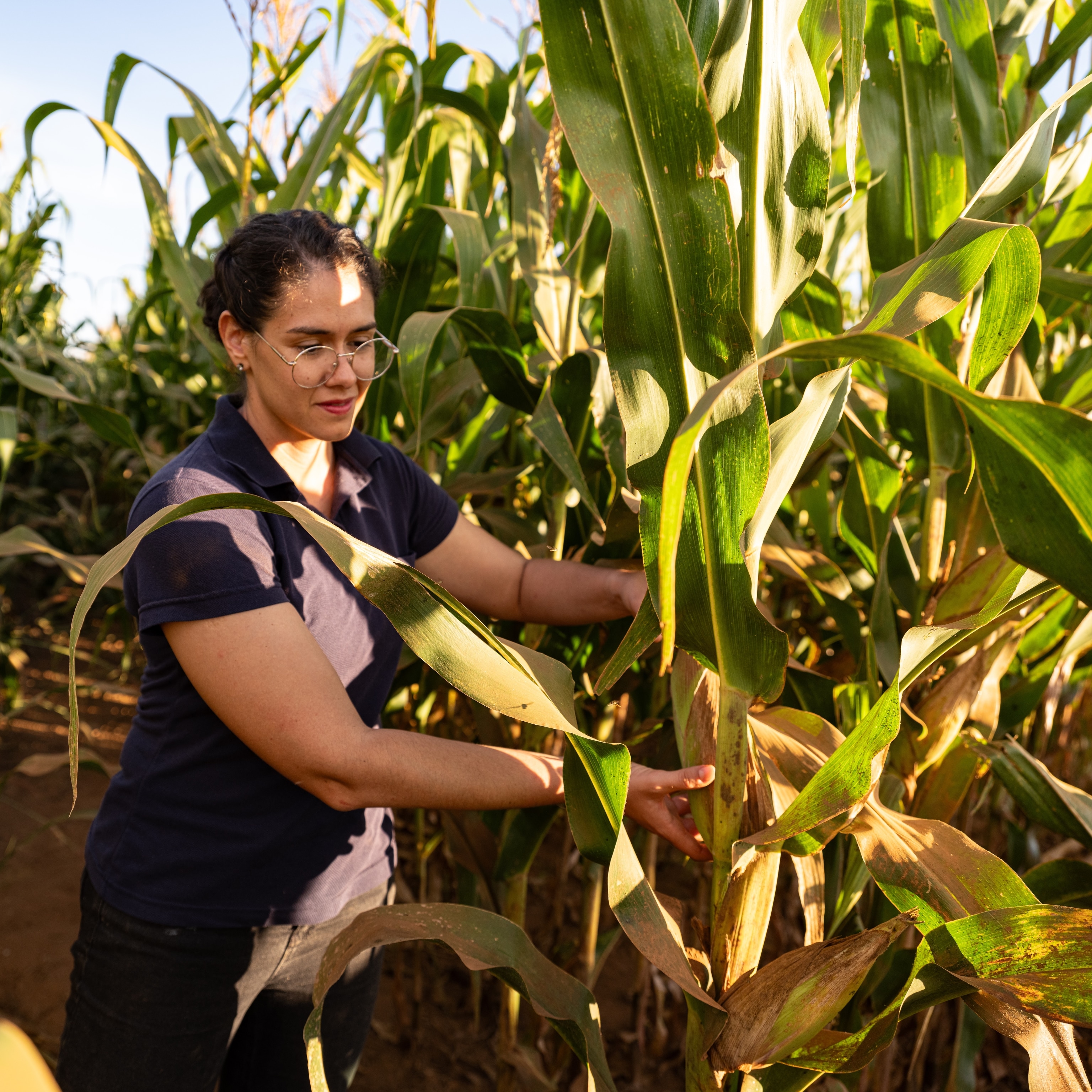Through coffee, smallholder farmers grow hope in Zimbabwe
With help from Nespresso, a Zimbabwean coffee resurgence changes the lives of farmers, their children, and the communities they live in.

Zimbabwe was once known as the breadbasket of Africa for its fertile fields and valleys that grew wheat, tobacco, and corn for export across the continent and abroad. Coffee was a key crop, and connoisseurs sipped cups of the smooth, fruity Zimbabwe blends at trendy coffee shops in London, Tokyo, and Johannesburg. The industry suffered devastating setbacks over the past couple decades, but Zimbabwean coffee is now experiencing a resurgence—and it’s changing the lives of determined smallholder farmers.
In 1988, the country’s annual production peaked at 15,000 metric tons of green coffee grown by more than 100 estates across northern and eastern Zimbabwe, along with about 700 smallholder farmers. But severe droughts and economic troubles decimated the industry. Today, only two estates, Crake Valley and Tanganda, and roughly 450 smallholders in the Eastern Highlands, produce around 500 metric tons of coffee annually, which is exported to specialty roasters across Europe, North America, and Australia.
Swiss coffee brand Nespresso and international nonprofit TechnoServe have been working to revitalize coffee sectors in East Africa since 2011. By serving as a buyer to local farmers, Nespresso helps to stabilize the market, while TechnoServe’s staff works on the ground with the communities, training farmers and providing technical expertise in recommended practices. More and more farmers in Zimbabwe are beginning to grow coffee as they see how it can lead to a better livelihood.
“Farmers are coming back to coffee from other crops,” says Nespresso AAA Sustainable Coffee Program™ manager Midway Bhunu, who coordinates implementation of Nespresso’s Reviving Origins program. Bhunu oversees farmer and stakeholder engagement, impact reporting, and training for farmers in the program. He also helped to develop the curriculum of the Nespresso Reviving Origins program’s AAA Academy, which provides lessons on crop management to local farmers.

“I see a comeback of the Zimbabwe coffee sector, specifically for the people of the Mutasa district where we are working,” Midway says. “We are very optimistic that many of the new farmers that come on board will be youth and women.”
One of the longtime farmers Midway works with is Jesca Kangai, who lives in Pangeti village in the Mutasa district of Zimbabwe’s Eastern Highlands. She’s been growing coffee for 17 years, since she and her husband decided it might be a good business for their family. “Life was very difficult, so we said let us try coffee and maybe we can survive,” she says.
For Jesca’s family, coffee has proven to be a prosperous and life-changing undertaking. Growing the crop can be difficult and technical work, but they persevered due to the benefits it provided. Coffee enabled the family to build a house, buy livestock, and send their five children to school. “We like coffee because we can see that it pays well, we are getting good prices,” she says. “And we are working together as a family so it is easier for us.”
On her smallholder farm, Jesca carefully tends her plants, regularly watering, weeding, and applying fertilizer. She now mills the coffee at home—a vast improvement, as previously it was necessary to carry the heavy bags of beans to a distant mill.
Jesca’s dedication and eye for detail on the finer points of irrigation and spraying keeps her trees in top shape. “That is why our coffee is of high quality,” she says. Such high quality that it’s actually prizewinning—in 2015, Jesca won an award as the second best coffee grower in Mutasa district and fifth in the entire Manicaland province.

There is always room for improvement, however, especially in the post-harvesting stages. The Reviving Origins program and the AAA Academy have been instrumental in training Kangai how to produce even better coffee.
Jesca attends demonstrations by AAA agronomists like Tafadzwa Nyukachena, who shows off the latest techniques in towns around the district and works directly with the farmers. Her family is benefitting a great deal from the lessons on pruning and harvesting, Jesca says: “My hope is that if we continue to apply what we are learning, we will get better yields and better income.”
Jesca’s farm now has 3,500 coffee trees, and she wants to add 500 more. This is a big undertaking—but she relishes the challenge. The increased market prices for exported coffee will make the hard work worth it. Nespresso is now paying farmers nearly double what they were making before, from around $3 per kilogram to $5 or even $6. Jesca uses her earnings from her coffee operation to pay school fees for her children, as well improve their homestead and expand the irrigation system of the farm. The steady funds have allowed her to become involved in other income-generating activities, such as growing bananas and sugar beans and taking part in village savings and lending schemes.
This new prosperity is enticing to other residents of the Eastern Highlands. “I see the livelihoods of these farmers changing. I think coffee production here could triple in the next three seasons,” Midway says. “Even the local school in this community is talking about starting a coffee plot, and you can imagine the spillover effects of having students learn about coffee production from a young age. I believe coffee is going to be respected again in Zimbabwe.”
With the support of Nespresso’s Reviving Origins program, Zimbabwe’s coffee sector may once again become a flourishing industry, allowing hundreds of smallholder farmers to make a good living. For Jesca it’s led to increased opportunities for her family. “Our wish is to be able to continue to send all our children to school,” she says, “so that they can become farmer trainers or teachers and have a good life and future.”







